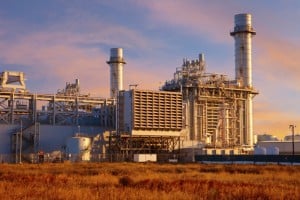There has been some evidence of new deals, such as the Cooper Energy development for new gas offshore in Victoria, and Origin Energy’s deal to supply gas to Engie’s Pelican Point power station in South Australia. Yet projects such as pipelines from the Northern Territory or AGL’s proposal for a floating LNG import terminal in Sydney or Melbourne don’t seem to have attracted customer support via contractual commitments. Maybe such ventures are just too hard or take too long. And the exporters seem unable or unwilling to bring in gas from international sources to meet their contracts in Asia, thus freeing up domestic gas for domestic consumers at export parity prices.
Published by the Australian Financial Review, Thursday 27 April
The Turnbull government has finally decided to crash the gas party and impose restrictions on gas exports. This is a big step. It will be welcomed by gas consumers, condemned by gas producers and heavily scrutinised by anyone with a commitment to markets as the primary vehicle for efficient commercial outcomes.
Pressure had been building on the government for some time. International prices had fallen well below the prices exporters may have been anticipating when they committed to the LNG export investment and signed contracts in which the gas price was linked to the price of oil, then more than $100 per barrel. Yet there was also increasing evidence that domestic customers were facing prices well above those being paid by the exporters’ customers in Asia. This evidence was a critical trigger for the government’s action, as was the threat of company closures, job losses and even more pressure on electricity prices.
Domestic customers never had a sound argument that they should not pay export parity – the delivered price less liquefaction and transport. In a functioning market, prices well above competitive levels would trigger commercial deals between suppliers and customers, either new domestic supply on the east coast, imports from overseas or even Western Australia, or swaps. Simplistically, there is enough gas and the market should deliver that gas at prices around export parity.
New gas venture too hard?
At the level of media releases, the government’s intervention is relatively straightforward: If the domestic gas market is not being supplied, LNG exporters who draw more gas from the market for their exports than they put into it will be ordered to limit exports to ensure the domestic market is supplied. The government will leave it to the exporters to find a commercial solution, with the objective being lower domestic gas prices that fairly reflect international export prices.
But a little delving into the detail opens a Pandora’s Box of issues and questions. And the blame game will start soon.
The gas exporters seem to have been convinced that the government would not intervene. They tried to assure the government that there was enough gas for both the domestic and export markets and that the market would deliver if only recalcitrant state governments would remove their constraints on onshore gas developments, primarily fracking for coal seam gas. The latter was never going to happen, and the industry has failed to allay the genuine concerns of governments and environmentalists. There remains an urgent need for a sound, national approach to regulation of all onshore gas developments in Australia. The federal government’s intervention may make it harder to convince the states to agree.
Why the high prices?
However, none of this adequately explains the high domestic prices being reported. Big gaps between domestic and export prices suggest the market is not working and in such circumstances governments will, and arguably should, intervene. Domestic prices of $15-$20 per gigajoule are simply unsustainable against international prices of $10-$12 that suggest a comparable domestic price of $8-$10. And more supply will not completely relieve the frustration of domestic customers, since at best it will deliver export parity prices – more than double the price that domestic consumers had been paying for the past several decades.
The industry was unable to provide a timely, acceptable solution. Indeed, industry players seemed to be divided on who was to blame (Santos sucking gas from the domestic market while Shell and Origin were not). They also seemed to be blaming regulations on one side and contractual obligations (self-imposed) on the other. The government had to respond politically, and the industry didn’t seem to heed the warning.
The government did have alternatives. It could have underwritten one or more gas pipelines, put more pressure on state governments to lift supply restrictions, or forced some form of transparent spot market on the gas industry. These were presumably rejected as too hard or too slow.
No one, including thoughtful gas customers, should be happy or comfortable with the government’s intervention. Yet it is understandable and had arguably become unavoidable.
There will be consequences: defining the “domestic market” will be hard to do; how prices will be determined is unclear; companies may face substantial financial pain with little prospect of redress; and, not least, the sovereign risk genie has been let out of the bottle. Whether all this will balance out for better or worse won’t become clear for months, maybe even years.
 Published by the
Published by the